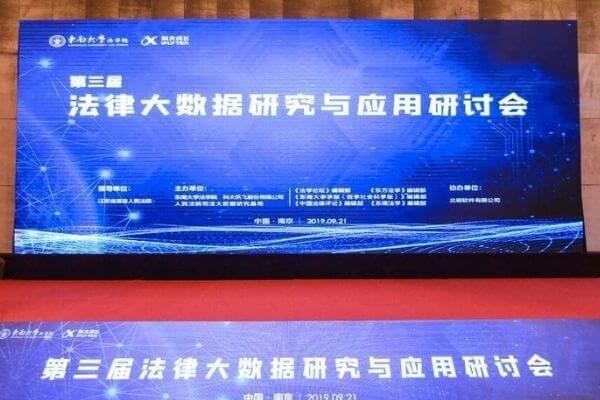
On 21st Sept. 2019, the Third “Research and Application of Legal Big Data” Seminar was held in Nanjing, China. At the seminar, participants discussed the latest development of big data and artificial intelligence in the judicial field in China. Dr. Guodong Du and Dr. Meng Yu, founders of China Justice Observer, also attended the seminar.
The seminar was hosted by the Law School of Southeast University in Nanjing. The Supreme People’s Court (SPC) of China has set up a judicial big data research base in the said Law School, and Professor Wang Lusheng (王禄生) is the director of the base.
The base has been carrying out cutting-edge research on legal big data and artificial intelligence, and has developed some products for the SPC and other local courts, and won the champion in Shanghai division of the 2019 Global Legal Hackathon.
In this post, we will share the views of some participants from the seminar.
I. Development of China’s intelligent courts
Judge Li Jianli (李建立) (Assistant Director of the Information Center of the SPC) made a speech on “Status Quo, Achievements and Planning of the Intelligent Courts”, sharing with us the construction of the intelligent courts in China from the following five aspects:
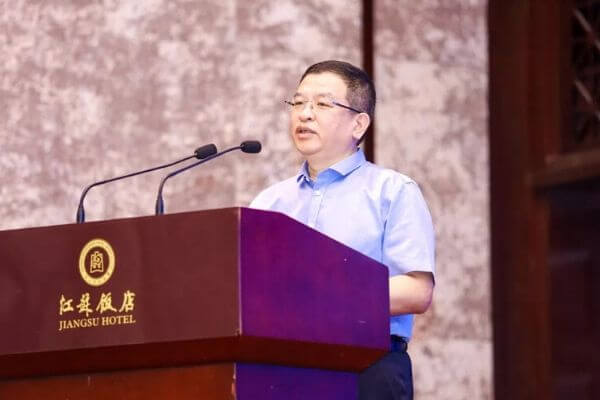
1. Chinese courts have established four public platforms (we have introduced these platforms before) to make available court information to the parties and the public through the Internet.
2. Chinese courts have provided online litigation services for the parties through the litigation service website, and now they are connecting the web app (i.e. “China Mobile WeCourt (中国移动微法院)”) to WeChat, the largest mobile social app in China.
3. Chinese courts have developed many systems, such as intelligent trial support system, trial speech recognition system, similar case pushing system, informationized case handling platform for commutation and parole, and “online data integration” processing platform for road traffic disputes, all assisting judges to improve quality and efficiency of their work.
4. Chinese courts are using information systems to improve the efficiency of judgment enforcement (we have introduced this before).
5. Chinese courts have established an OA system (trial management system) connecting the courts nationwide, through which information about all courts, all judges and all cases can be collected in real-time. According to these big data, Chinese courts can analyze court trials from all over the country in real-time, assess the individual performance of judges, as well as evaluate the social and economic situation.
II. Use of speech recognition technology in court
Mr. Gao Guibin (高贵彬) (VP of Legal Business Group at iFLYTEK) made a speech on “Application Prospect and Trend of AI Technology in the Legal Field”. iFLYTEK is a leading technology company in China, with speech recognition as its core product. Some courts in China are now using iFLYTEK’s product to directly translate the court hearing recordings into texts on the spot and in real-time. iFLYTEK is taking this as a starting point to provide more products for the courts.
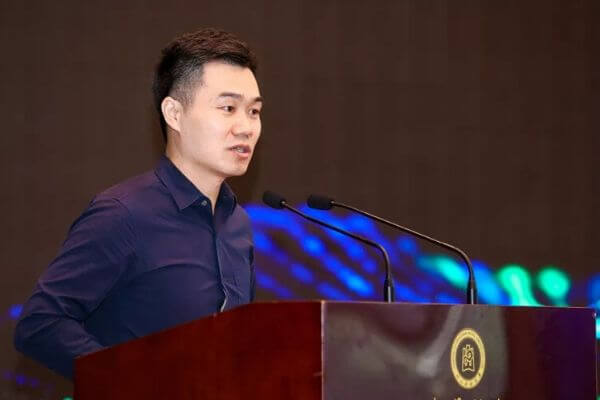
According to Mr. Gao, the application of AI technology in the judicial department mainly includes intelligent speech processing, translating electronic files into structured data, quality inspection of court instrument, audio and video analysis, and face recognition.
Mr. Gao believes that the role of artificial intelligence in the judicial field is to assist judges, rather than to replace judges in decision-making. Therefore, their ultimate goal is to achieve human-machine coupling, that is, AI deals with routine issues, which account for 80% of the court’s workload; while human beings with expertise and judgment ability deal with the remaining 20%.
It is worth noting that iFLYTEK’s technology was also used in this seminar to transcribe the speech of the participants into Chinese texts and translate them into English in real-time. Thus, Chinese and English subtitles appeared on the big screen of the venue simultaneously.
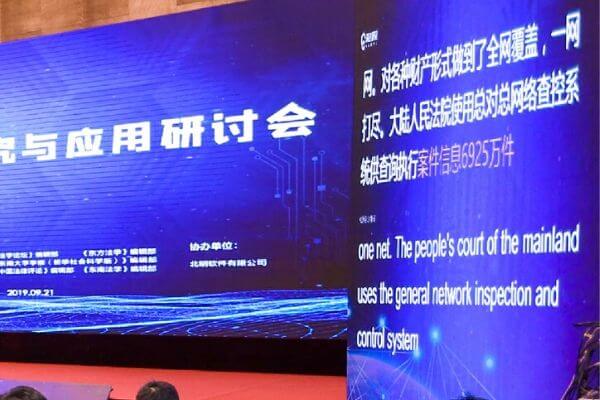
III. Application of legal intelligent Q&A robot
Professor Wang Lusheng (Director of Judicial Big Data Research Base) made a speech on “Technology Development and Application of Legal Intelligent Q&A Robot”. Professor Wang has presided over a number of projects at the base, and the speech is related to one of his ongoing projects.
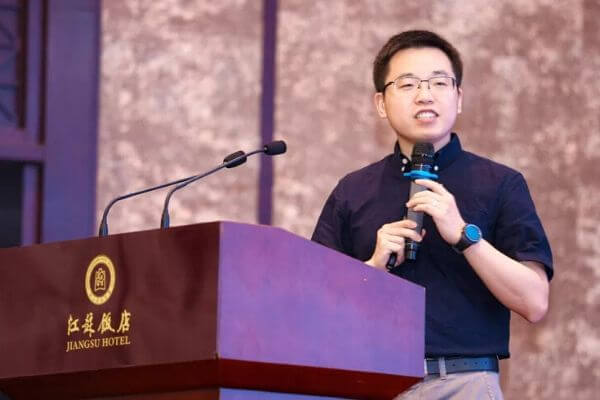
Professor Wang introduced the Chinese government’s attention to judicial big data and AI. For example, the State Council of China proposed “Intelligent Court” (智慧法院) and “Intelligent Procuratorate” (智慧检察院) in its “13th Five-year (2016-2020) Plan for National Informatization” (“十三五” (2016-2020年)国家信息化规划), and “Intelligent Tribunal” (智慧法庭) in its “New Generation Artificial Intelligence Development Plan” (新一代人工智能发展规划). China’s Ministry of Science and Technology plans to invest CNY 900 million (about USD 126 million) in this field.
The “Xiaofa”(小法) robot developed by Professor Wang and his team has received consultation for 15.4 million times and has stored 500,000 entries of data in its legal knowledge database.
According to Professor Wang, the development of this type of robots as “Xiaofa” can be divided into four stages:
In the first generation, the knowledge database is built manually with highly limited content coverage. It provides answers to users according to keywords;
In the second generation, the knowledge database is built in a semi-automatic way and covers specific fields. It can accept users’ single-round questions.
In the third generation, the knowledge database is built in a semi-automatic way and covers more fields. It can accept users’ multiple-round questions.
In the fourth generation, the knowledge database can automatically expand its data beyond the database, and can conduct dialogue with users with emotional expressions.
At present, “Xiaofa” robot is developing from the second generation to the third.
IV. Application of blockchain technology in litigation
Mr. Wu Pingping (吴平平) (General Manager of Legal Innovation Department at Tencent) made a speech on “Judicial Blockchain and Its Application Practice”.
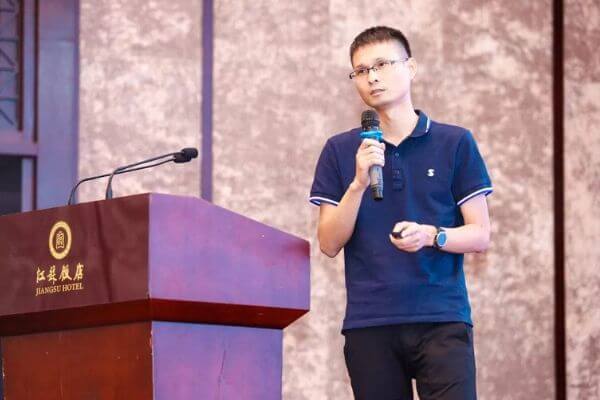
Mr. Wu said that according to his research, during 2012-2018, cases involving electronic evidence accounted for 80%. The rationale behind is that the signing of most consumer contracts (such as online shopping contracts, consumer finance contracts, etc.) and the payment thereof, and the infringement of intellectual property all occurred online.
He analyzed 20,300 judgments mentioning words such as “electronic data”, “electronic evidence”, and found that only in 7.2% of the cases, the electronic evidence was admitted by the court. This shows that the courts rarely admit electronic evidence. In Mr. Wu’s opinion, electronic data is of large amount, easy to be tampered with and hard to be properly saved, so it’s difficult for the parties to prove the authenticity of electronic evidence to the court.
Mr. Wu believes that blockchain technology can solve this problem, because it is essentially a tamper-proof, traceable and distributed ledger technology. (We have introduced blockchain technology in Chinese courts in our previous post.)
At present, Chinese enterprises are very keen to apply blockchain technology to electronic evidence. Cyberspace Administration of China has released the first batch of blockchain products registered with it. 16% of the 197 products are related to the blockchain application in the legal field.
According to Mr. Wu, there are mainly two types of blockchains in the judicial field in China.
The first type is the public chain, which has the following characteristics: there is no official organization to maintain it, all nodes have the same permissions, no authorization is needed for access and exit. In the case where Hangzhou Internet Court admitted blockchain evidence for the first time, the blockchain therein was the public chain.
The second type is the judicial alliance chain, which has the following characteristics: it is jointly initiated and maintained by several institutions, the permission of each node is different, and authorization of the management institution is required for access and exit. At present, the “Balance Chain” (天平链) adopted by Beijing Internet court, the “Internet Legal Chain” (网通法链) adopted by Guangzhou Internet court and the “Zhi Xin Chain”(至信链) developed by Tencent are all judicial alliance chains.
Most of China’s large Internet companies will join a blockchain alliance to facilitate the blockchain to record their data. If the company or its users need to submit these data to the court as evidence, they can prove to the court the data is authentic and not tampered through blockchain.
V. Others
Aside from the aforementioned speakers, there were 10 more speakers at the seminar who respectively introduced their technologies and the application thereto in court. They also analyzed the impact of AI on the proceedings, law and justice from an ethical perspective. We will keep following China’s progress in this regard.
Contributors: Guodong Du 杜国栋 , Meng Yu 余萌









